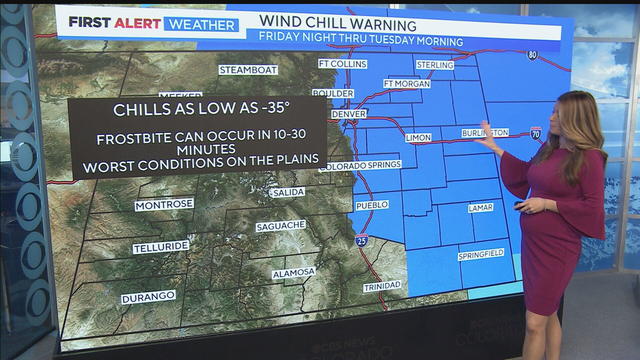Wind Chill Warning: Understanding the Danger

SEO Meta Description:
Learn about the implications of a wind chill warning and how to stay safe in extreme cold conditions. Get expert insights and tips to protect yourself and your loved ones.
Introduction:
In regions prone to harsh winters, a “wind chill warning” can be a stark reminder of nature’s unforgiving side. Understanding what this warning entails and how to prepare for it is paramount for safeguarding oneself against the dangers of extreme cold. In this comprehensive guide, we delve deep into the nuances of wind chill warnings, offering insights, tips, and precautions to navigate through these challenging weather conditions.
1. The Science Behind Wind Chill:
Understanding the science behind wind chill is fundamental to grasp the severity of a wind chill warning. Wind chill refers to the cooling effect of the wind on exposed skin. It accelerates the rate at which heat is lost from the body, making it feel colder than the actual air temperature.
1.1 Factors Influencing Wind Chill:
Several factors influence wind chill, including wind speed and temperature. Higher wind speeds result in more rapid heat loss, intensifying the chilling effect. Even moderate winds can significantly lower perceived temperatures, especially when combined with low ambient temperatures.
1.2 Calculating Wind Chill Index:
The wind chill index, expressed in degrees Fahrenheit or Celsius, quantifies the perceived temperature based on air temperature and wind speed. Understanding how to interpret this index is crucial for gauging the potential risks associated with exposure to cold, windy conditions.
1.3 Impact on Human Health:
Extreme wind chill conditions pose serious health risks, including frostbite and hypothermia. Prolonged exposure to cold, coupled with high winds, can lead to rapid body heat loss, endangering both physical and cognitive functions.
2. Identifying a Wind Chill Warning:
Recognizing the signs of a wind chill warning is essential for taking proactive measures to ensure personal safety and well-being. Meteorological agencies issue these warnings when the combination of cold temperatures and wind speeds reaches critical levels.
2.1 Criteria for Issuing a Warning:
Meteorologists use specific criteria, such as forecasted wind speeds and minimum temperatures, to determine when to issue a wind chill warning. These thresholds vary depending on regional climatic conditions and are designed to alert the public to potentially life-threatening cold.
2.2 Duration and Severity:
Wind chill warnings can vary in duration and severity, ranging from brief advisories to prolonged alerts spanning several days. Understanding the duration and severity of a warning enables individuals to plan and prepare accordingly, minimizing exposure to hazardous conditions.
2.3 Public Awareness and Communication:
Effective communication of wind chill warnings is vital for ensuring public awareness and encouraging proactive measures. Meteorological agencies disseminate timely information through various channels, including media outlets, websites, and mobile apps, to reach a wide audience.
3. Precautions and Safety Measures:
Taking proactive precautions is paramount when facing a wind chill warning to mitigate the risk of cold-related injuries and illnesses. Implementing appropriate safety measures can help individuals and communities stay safe and resilient in extreme cold conditions.
3.1 Dressing for the Cold:
Wearing multiple layers of warm, insulating clothing is essential for retaining body heat and preventing hypothermia. Additionally, covering exposed skin and extremities with hats, gloves, and scarves can minimize the risk of frostbite and windburn.
3.2 Avoiding Outdoor Activities:
Limiting outdoor activities during a wind chill warning can reduce exposure to cold, windy conditions and lower the risk of cold-related injuries. When venturing outside becomes necessary, scheduling brief outings during the warmest part of the day and seeking shelter from the wind can help mitigate risks.
3.3 Protecting Vulnerable Populations:
Special attention should be given to vulnerable populations, such as children, the elderly, and individuals experiencing homelessness, during a wind chill warning. Providing access to warm shelters, blankets, and hot meals can help safeguard their health and well-being.
4. Responding to a Wind Chill Warning:
Responding promptly and decisively to a wind chill warning is crucial for minimizing risks and ensuring personal safety. By following established protocols and guidelines, individuals can navigate through challenging weather conditions with confidence and resilience.
4.1 Staying Informed:
Remaining vigilant and staying informed about changing weather conditions is essential when a wind chill warning is in effect. Monitoring updates from reliable sources and heeding official guidance can help individuals make informed decisions and take appropriate actions.
4.2 Creating an Emergency Kit:
Preparing an emergency kit stocked with essential supplies, such as food, water, medications, and blankets, is indispensable for weathering extreme cold events. Having a well-equipped kit on hand enables individuals to cope with unforeseen emergencies and disruptions.
4.3 Seeking Shelter and Assistance:
Seeking shelter in a warm, secure location is paramount during a wind chill warning, especially for those without adequate housing or heating. Community organizations, emergency services, and shelters offer assistance and support to individuals in need during extreme weather events.
5. Conclusion:
In conclusion, a wind chill warning signifies more than just a drop in temperature—it serves as a critical reminder of the inherent dangers posed by extreme cold and wind. By understanding the science behind wind chill, recognizing warning signs, and taking proactive precautions, individuals can stay safe and resilient in the face of adverse weather conditions.


Leave a Comment